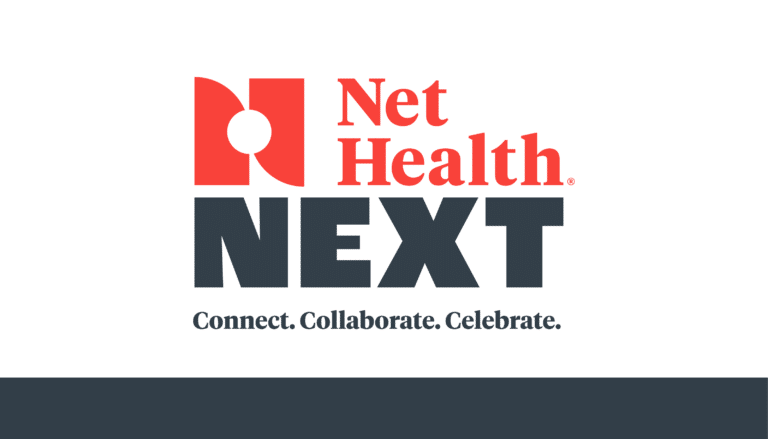December 1, 2022 | Net Health
3 Minute Read
EMR Systems: Look For These 6 Critical Features
Electronic Medical Record Systems
Electronic Medical Records or EMR solutions in healthcare refer to EHR software systems (electronic health record) or EMR software. Electronic medical records software began as a way to store patient medical records securely and digitally. However, electronic medical records software (also sometimes known as an EHR system) do that and so much more.
Leading EMR systems provide a way to maintain the standard medical (and clinical) data gathered on a patient. Having practice management software can help you streamline many of the functions integral to running your practice, as well as improving your bottom line.
The best EMR systems practice management software (or Electronic Health Record) systems help clinicians and HCPs to be both HIPAA compliant, as well as operating at optimal levels of efficiency and care.
Specialized Electronic Health Records
If you are not using EMR systems or specialized EHR software for your specialty medical or clinical practice (e.g. wound care, rehab therapy, which includes physical therapy, occupational therapy, and speech-language pathology), you are missing out on the benefits a top EMR systems platform provides, freeing up resources, allowing you to focus on providing quality health care only to your patients.
Learn more about Net Health’s specialized EHR software and how it can bolster your business
Healthcare software that is used to provide you with EMR systems solutions can come with a variety of features. These EMR systems (and most EHR systems) features include interfaces and systems integration, full medical history, document scanning, medication tracking, e-Prescriptions, medication management, appointment reminders, marketing support access to lab results and more. Keep reading to discover six of the key features one should prioritize when seeking an EHR platform.
Here is a look at some of the most common EHR system features that should be a part of the clinical management software that you are using or considering.
1. Interfaces and Systems Integration (including Billing & Hospital Information Systems)
Integration is one of the most important aspects of any electronic medical recording solution and is accomplished via interfaces that push or pull data between electronic health records/EHR systems—in real-time and on-demand.
Learn more about the history of Electronic Health Records
Two common points of integration are a hospital information system (HIS; if your practice is affiliated with a larger institutional network) and an electronic billing system. An EMR software billing integration provides you with a way to streamline the billing process.
It also improves the efficiency of your front office staff and assists with the reduction of coding errors that can result in payment delays, costing you both time and money. Reimbursements can happen at a faster rate, through the integration of the billing system within the EMR software solutions used by your hospital or clinical practice.
This EMR feature is highly sought when adopting an effective EMR system. It reduces the time required to enter patient information each time a medical billing cycle occurs, making it an important electronic medical record feature.
Once your bulky patient charts and files are initially loaded into the system, this data is quickly matched and can be sent electronically to an outside billing service, or prepared in house. You are free to devote more time to patient care and the efficiency of your operations.
2. Document Scanning
Document scanning is an important feature within specialized EMR solutions, allowing you to create custom workflows tailored to your clinic’s unique needs. With a document-scanning feature built into your electronic medical recording system, you have the ability to direct necessary supporting clinical documentation back to your in-house or external billing clerks, who in turn can forward the completed submission for reimbursement. This eliminates the need to obtain, copy and fax documents, as well as reducing the potential for missing paperwork or billing delays.
3. Medication Tracking
You can easily track medications prescribed to your patients and have information available at your fingertips with the medication-tracking feature of the best EMR systems solutions. One of the true values of medication tracking is the ability to determine if a prescribed medication interacts with other medications being taken by the patient. It can also be a useful and powerful tool for identifying allergic reactions and keep your patients safe from any potential, harmful effects.
EMR medication tracking features within your EHR platform provide warnings that may have been issued about a prescribed medication and suggest alternatives that may be equally effective in meeting the care needs of your patients.
4. E-Prescriptions
With e-prescriptions, you no longer have to give your patients scripts with poorly written handwriting, hoping the receiving pharmacy correctly fills the order, as the electronic medical records solution makes this a digital record. e-Prescriptions provide your practice with the ability to electronically write prescriptions and either give a legible printout to the patient or send the order directly to the patient’s pharmacy of choice.
The best EMR systems also offer providers a secure patient portal, for electronic prescription of controlled substances, which is a highly regulated procedure based on state and federal requirements.
5. Appointment Reminders
With EMR software or electronic medical records being connected through email via mobile devices, tablet computers and laptops means the ability to stay in contact with your patients is constant. An appointment reminder feature allows you to take advantage of this level of connectivity by sending patient’s automated reminders.
Net Health’s EHR solutions integrate with your scheduler and direct messages to patients, based on the frequency or amount of advance time you establish within your system.
Patients can be given initial notification of an impending appointment, a reminder seven days in advance, and once again 24 hours before the scheduled appointment. Automating this work results in significant time savings for the practice management clinic and a decrease in missed appointments; two important EHR functions.
6. Marketing Support
Don’t forget, while you’re collecting data about your patients’, a top rated solution should be building a comprehensive view of your client base population health and performance output.
Some specialized EMR systems provide you an opportunity to benchmark your team against current national performance. Knowing how you compare to industry peers gives you the ability to better market your clinic and help to improve patient engagement and therefore improve patient outcomes.
These software solutions can help improve the patient experience, increase patient engagement, as well enabling electronic prescribing while monitoring drug interactions, help automate clinical workflows and work well with other medical systems through integration, as mentioned earlier.
EHR software features such as a robust patient portal, tools for patient engagement marketing, intuitive clinical workflows, patient scheduling and practice management from mobile devices can set one electronic health records software system and EHR vendors above another and have become the standard in 2023. EMR software is adopted by everything from hospitals to ambulatory care clinics, human services to independent practices as an ideal practice management solution.
Are you taking advantage of the general capabilities of an EMR system for patients ( one that is patient-centric)? Are you at the top of your region for patient outcomes?
Medical EMR systems should have ways of easily accessing and reporting this important and sensitive health information. You can then share the data with the community of doctors and organizations that refer to your clinic, or leverage the stats to your success through public-facing marketing.
More on EMR Systems and EHR Software
Electronic Medical Records (EMR) and EHR software systems represent a significant leap forward in healthcare technology, offering myriad benefits to healthcare providers. EMR systems and EHR software, in particular, focus on the standard medical and clinical data associated with a patient, serving as a digital version of a patient’s paper chart and medical histories.
These systems are crucial for maintaining patient records, managing treatment plans, revenue cycle management, increase and improve patient engagement, improve clinical documentation, all while protecting patient data and streamlining administrative tasks for medical practices or healthcare practices.
Advantages of an industry leading EMR or Electronic Health Record
One of the primary advantages electronic health record systems or EHR software is the enhancement of healthcare providers’ productivity. By digitizing patient records, these systems reduce the need for manual record-keeping, allowing healthcare professionals to access and update patient information more efficiently. This not only saves time but also minimizes the likelihood of errors associated with manual data entry.
When considering an electronic health record or EHR vendors another significant aspect of practice management software and EMR systems is their role in revenue cycle management for healthcare practices.
By integrating billing and coding processes within the EMR or electronic health records, healthcare providers can streamline the reimbursement process and improve revenue cycle management all while keeping patient management at the forefront.
Choosing an Electronic Health Record Systems Vendor
This EHR software integration ensures that billing is accurate and compliant with healthcare regulations, protecting sensitive patient data, which is essential for the financial health of medical practices. Net Health offers practice management solutions in their specialty EHR for Rehab Therapists, allowing for treatment plans that provide key insights and clinical decision support.
Furthermore, EMR systems and EHR software contribute to better client care and offer patients benefits such as patient portals. Patient portals are a crucial element of modern healthcare management software.
EHR Software for Effective Care
EMR software (or an Electronic Health Record system) provides complete and up-to-date patient information and patient histories, which is critical for making informed treatment decisions that improve clinical outcomes. These systems also facilitate better care coordination and among different healthcare providers, ensuring that all involved parties have access to the same data, leading to more coordinated and effective care.
EMR systems and EHR systems software often come equipped with advanced features such as e-prescriptions, appointment reminders, and medication tracking. E-prescriptions, for example, improve the prescription process’s accuracy and efficiency, reducing medication errors and enhancing patient safety. Similarly, appointment reminders help reduce no-show rates, ensuring that patients receive the care they need in a timely manner.
EMR systems and their many benefits
In summary, EMR and EHR systems represent a critical component of modern healthcare infrastructure. By improving the efficiency of healthcare providers, enhancing patient care, and streamlining revenue cycle management, these systems are integral to the successful operation of healthcare facilities.
As health information technology also continues to evolve, the capabilities and benefits of EMR software and electronic health records/EHR systems are expected to expand further, playing an even more significant role in the healthcare industry.
The integration of EMR platforms in healthcare organizations to track and monitor patient medical records has been transformative. These systems not only manage health records efficiently but also serve as a comprehensive platform for practice management.
The capacity of EMR systems to handle sensitive historical patient information and patient charts with accuracy and accessibility is a game changer for healthcare providers and population health management as a whole.
Key to integrated practice management
For healthcare organizations, the adoption of EHR software and EMR systems is not just about digital transformation; it’s about enhancing the quality of care. By having a centralized repository of health records, medical professionals can access historical patient data in real-time, allowing for more informed decision-making.
This access is crucial for electronic health records software functionality, especially in emergency situations where understanding a patient’s health history can be lifesaving and prevent poor outcomes for a medical practice, as we know we can’t always count on a comprehensive medical history to be provided via patient portal or intake form, as other healthcare providers could also attest to. This is of paramount importance when considering EHR systems for your organization.
Moreover, the integration of medical billing software into EMR systems revolutionizes financial operations and puts practice management software in the best interest of patients and providers alike. This integration streamlines the medical billing process, reducing errors and improving the efficiency of claims processing.
Medical billing software also ensures compliance with various insurance and regulatory requirements, making it easier for practices to navigate the complex landscape of healthcare reimbursement. EHR systems with a patient portal makes it easy for clients to access their care plan remotely.
The role of EMR systems in managing the patient history is also pivotal. By having a detailed and updated record of a patient’s medical history, treatments, and tests, healthcare providers can offer more personalized and effective care. This comprehensive view of a patient’s health history is invaluable in diagnosing and treating patients more accurately.
For use by PCPs
In primary care clinics, the use of EMR systems has significantly improved practice management. These systems help in scheduling appointments, tracking patient visits, and managing patient communications, thereby enhancing the overall efficiency of the clinics. For these clinics, where the volume of patients can be high, these systems are essential for maintaining high standards of care.
Additionally, EMR systems play a crucial role in supporting physician practices. By automating administrative tasks, physicians can focus more on outcomes instead of paperwork. This shift not only improves the quality of care but also enhances patient satisfaction.
Ensuring HIPAA compliance
A critical aspect of EMR and EHR systems is ensuring they are HIPAA compliant. This compliance protects patient privacy and ensures that sensitive health information is securely managed. For healthcare organizations, maintaining HIPAA compliance is non-negotiable and is a key feature of these systems.
Furthermore, EMR and EHR systems contribute to the study of population health. By aggregating patient data, these systems can help in identifying health trends, which can be instrumental in shaping public health policies and practices.
Net Health as a technology partner
When it comes to your electronic medical recording platform, it’s all about finding the right fit for your medical practice.
Make sure all of your unique needs are being catered to by electronic health records by choosing a specialized EHR system from the suite of specialized EMR software provided by Net Health.
Our electronic medical record system (EHR systems) is comprehensive and specialized. Keeping software, analytics, and robust EMR system or electronic health records platforms steering clear of the standard ‘one size fits all’ approach taken by other EMR software solutions and computerized administration processes. These EHR systems can be a one trick pony, focusing on finding just the right fit to provide fast and agile solutions for your occupational medicine, rehab therapy for clinic, wound care EHR, or urgent care clinic’s needs.
Discover for yourself what makes Net Health the leader in specialized EHR systems software solutions for outpatient health care providers, and Electronic Medical Record Software.
Conclusion
In conclusion, EMR and EHR systems have become the backbone of modern healthcare. Presently they allow doctors to monitor patients remotely from a physician dashboard or using technologies such as remote therapeutic monitoring. They not only streamline health records management but also enhance medical billing, practice management, and the handling of sensitive personal data. Net Health’s specialized EHR systems are built to meet the needs of a modern hospital, clinic or healthcare business.
Their role in supporting healthcare organizations, physician practices, and primary care clinics is undeniable. As technology continues to evolve, these EHR systems will undoubtedly play a more significant role in shaping the future of healthcare delivery.





